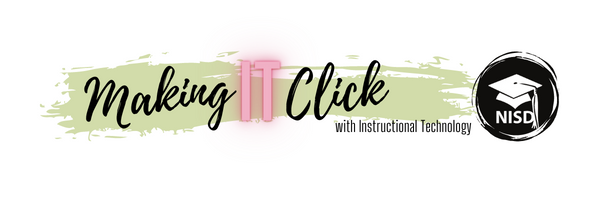Students were asked to collaborate with peers to craft creation myths. Through each unique tale, students explained how a natural phenomena came to be, while teaching the audience a valuable lesson about the choices we make and the impact they can have. Students spent a week working through the process described below.
Planning and Drafting
A key part of this project involved students collaborating on all aspects of the myth. In order to easily facilitate collaboration, Mrs. Davis shared template resources with students through Google Classroom. Student groups were then able to access the files from their own Google Drive and work together to develop a solid plan. Students also relied on Google Drive as they drafted the first version of their myth. Google Docs allowed students to simultaneously access the same document so all group members could serve as active participants. The use of the “History” feature available with this tool enabled the teacher to clearly see the individual contribution of each group member. This encouraged full participation and aided in the assignment of individual student grades.
Publishing
When it came time to publish, students were given the option of using Adobe Spark Video or Pages. Spark considers itself, “a one-stop content shop for creating and sharing visual stories that will wow any audience on any device.” This was the perfect tool for students to blend their text with images, bringing their stories to life! Click on the images below to see their creations.
Reflection & Feedback
Mrs. Davis utilized Lino sticky canvas for students to provide feedback to one another. The canvas was created by the teacher and then shared with students. Each group created a note with their names and a link to their presentation. Groups were required to view at least 2 projects and use the TAG feedback strategy to provide authentic peer feedback. The collaborative aspect of Lino allowed all students to view one another’s projects, as well as access the feedback. While Mrs. Davis was happy with the overall experience Lino provided students, she did mention that she would set things up differently if she utilized the tool again in the future. She suggests creating the original notes for each groups and then allowing students to comment around them. This would allow the teacher to lock the notes in place and prevent any confusion caused by a lack of organization.
In years past, students completed this project using paper and art supplies. It’s always been a project students love, but this year, the integration of technology took things to an entirely new level. A common frustration reported previously was the limited time students had to complete the myth. With the use of collaborative tools, students could access their work anytime, anywhere. The increased accessibility, improved the overall quality of the projects and provided students a deeper understanding of the content. While all of these benefits make the project worthwhile, the most meaningful benefit would be the ability to instantly provide students with a global audience. Since the assignment was completed using a digital tool, students were able to link their Adobe Spark Videos or Pages to their ePortfolios. This will be an experience students can look back on and share for years to come.

No comments:
Post a Comment
Note: Only a member of this blog may post a comment.